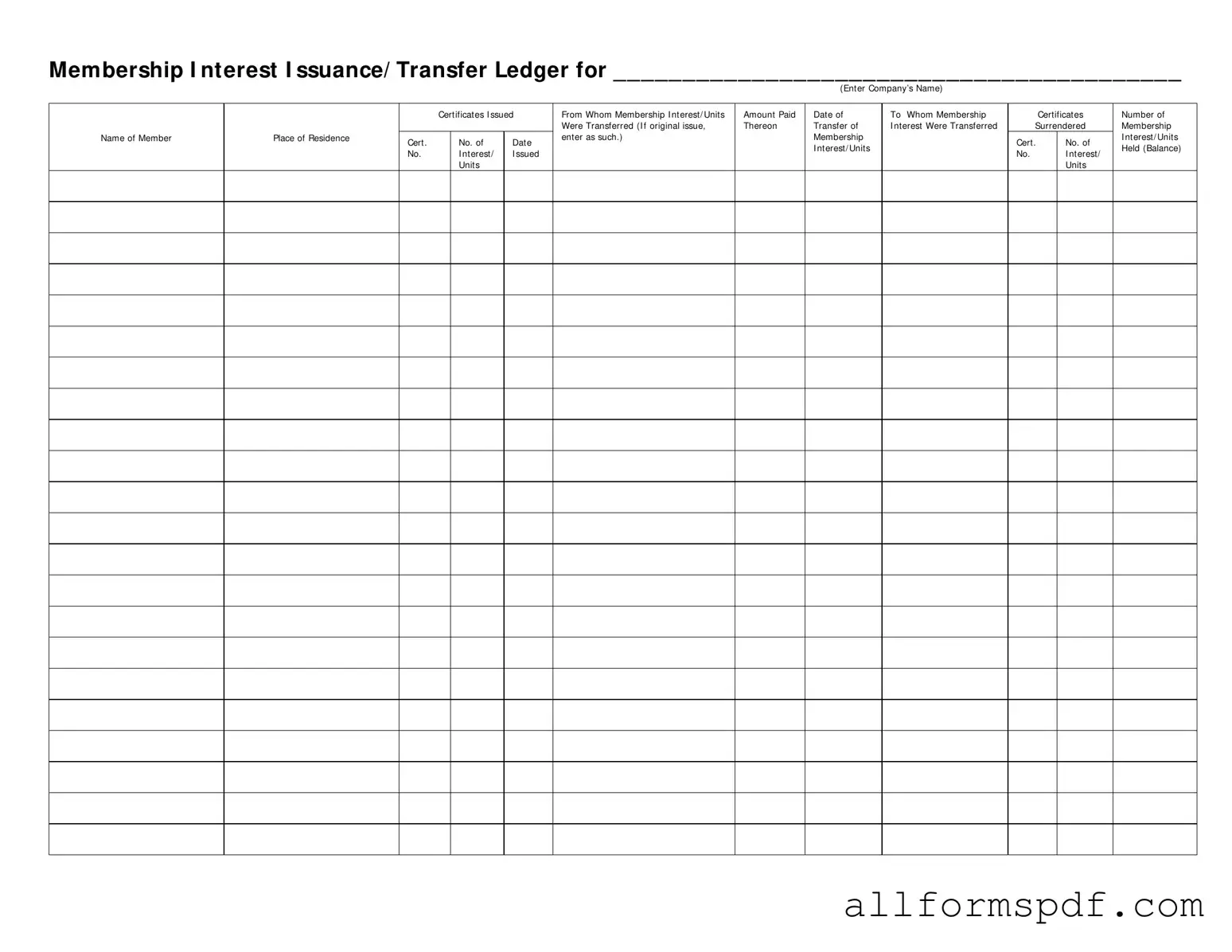Filling out the Membership Ledger form can seem straightforward, but many people make common mistakes that can lead to confusion and errors. One frequent error is failing to enter the company's name correctly. This form is specific to a particular organization, and if the name is misspelled or incomplete, it can create issues when tracking membership interests. Always double-check the name to ensure accuracy.
Another mistake involves the certificates issued section. Some individuals neglect to record the correct certificate numbers or forget to include them altogether. This information is crucial for maintaining accurate records of membership interests. Each certificate number should be clearly noted to avoid any discrepancies in ownership.
People often overlook the amount paid for the membership interests. This detail is essential for financial records and for determining the value of the interests transferred. Failing to provide this information can lead to misunderstandings regarding the financial status of the membership interests.
The date of transfer is another critical piece of information that is sometimes omitted. Without this date, it can be challenging to establish a clear timeline of ownership changes. This can complicate matters if disputes arise or if the organization needs to verify ownership at a later date.
Additionally, some individuals mistakenly enter the place of residence of the member incorrectly. Accurate contact information is vital for communication and legal purposes. If the place of residence is not current or correctly stated, it can hinder the organization’s ability to reach out to its members when necessary.
Finally, many people forget to update the number of membership interests held after a transfer occurs. It’s important to keep this balance accurate to reflect the current ownership status. An outdated balance can lead to confusion and potential legal issues down the line.
